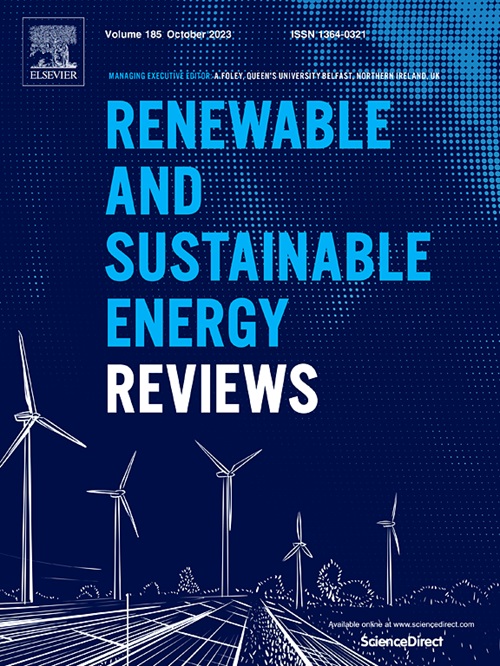市场区域和电气化-市场区域配置对电力供热影响的案例研究
IF 16.3
1区 工程技术
Q1 ENERGY & FUELS
引用次数: 0
摘要
随着可变可再生电力来源的扩大、供暖、运输和工业的电气化以及跨国界能源系统电力一体化程度的提高,电力市场结构和市场行为不仅影响单个国家系统的投资和经营决策,而且影响跨国界的投资和经营决策。本文以德国为例探讨了这一点,尽管南北之间存在瓶颈,但德国拥有单一市场区域电力市场,导致丹麦在高vres生产期间购买该国北部的弃电。这为丹麦风力涡轮机运营商提供了收入,但这也意味着丹麦在这段时间的价格被人为抬高,导致Power2x和Power2Heat失去了运行的机会。它最终影响到丹麦能源转型的一些主要要素的可行性,这是基于各个部门的电气化。对于消费者来说,这也引起了人们的担忧,即为什么风力涡轮机在高电价时段会减少。本文将在德国和丹麦的背景下讨论这些问题,并探讨对能源系统的影响。在德国建立更多市场区域的市场重组将降低丹麦的电价,从而提高电力密集型过程和电气化努力的可行性,同时也使丹麦的广大电力消费者受益。然而,这并不一定有利于可再生能源生产商。本文章由计算机程序翻译,如有差异,请以英文原文为准。
Market zones and electrification – A case study on the impact of market zone configuration on power-to-heat
With the expansion of variable renewable electricity sources (VRES), electrification of heating, transportation and industry, and increased electricity integration of energy systems across country borders, electricity market structures and market behaviour impact not only investment and operation decisions in individual country systems but also across borders. This article explores this based on the case of Germany which has a single market-zone electricity market despite bottlenecks between north and south, resulting in the purchase of curtailment north of the country in Denmark during periods of high VRES-based production. This provides an income for Danish wind turbine operators, but it also means that prices are artificially high in Denmark during these hours resulting in lost opportunities for Power2x and Power2Heat operation. It ultimately impacts the feasibility of some of the main elements of the Danish energy transition which is based on the electrification of various sectors. For the consumer, it also raises concern regarding why wind turbines curtail during hours of high prices. This article addresses these issues in the German and Danish context and explores effects on the energy system. A market reconfiguration with more market zones in Germany would lower electricity prices in Denmark thus improving the feasibility of both electricity-intensive processes and electrification efforts while also benefitting Danish electricity consumers in general. It will, however, not necessarily benefit renewable energy-based producers.
求助全文
通过发布文献求助,成功后即可免费获取论文全文。
去求助
来源期刊

Renewable and Sustainable Energy Reviews
工程技术-能源与燃料
CiteScore
31.20
自引率
5.70%
发文量
1055
审稿时长
62 days
期刊介绍:
The mission of Renewable and Sustainable Energy Reviews is to disseminate the most compelling and pertinent critical insights in renewable and sustainable energy, fostering collaboration among the research community, private sector, and policy and decision makers. The journal aims to exchange challenges, solutions, innovative concepts, and technologies, contributing to sustainable development, the transition to a low-carbon future, and the attainment of emissions targets outlined by the United Nations Framework Convention on Climate Change.
Renewable and Sustainable Energy Reviews publishes a diverse range of content, including review papers, original research, case studies, and analyses of new technologies, all featuring a substantial review component such as critique, comparison, or analysis. Introducing a distinctive paper type, Expert Insights, the journal presents commissioned mini-reviews authored by field leaders, addressing topics of significant interest. Case studies undergo consideration only if they showcase the work's applicability to other regions or contribute valuable insights to the broader field of renewable and sustainable energy. Notably, a bibliographic or literature review lacking critical analysis is deemed unsuitable for publication.
 求助内容:
求助内容: 应助结果提醒方式:
应助结果提醒方式:


